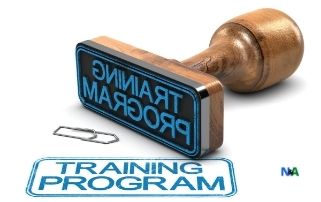Defining Emotional Intelligence in Leadership
In his article in “What Makes a Leader”, Daniel Goleman states that “I have found, however, that the most effective leaders are alike in one crucial way: They all have a high degree of what has come to be known as emotional intelligence.” Furthermore, in their article “Transformational Leadership in the Context of Organizational Change”, Eisenbach, Watson, and Pillai suggest that transformational leaders that can emotionally identify with followers and team members create more trust.
Leadership Emotional Intelligence Can Be Developed
Goleman goes on to explain that the components of emotional intelligence (including leadership emotional intelligence) are self-awareness, self-regulation, motivation, empathy, and social skills. Goleman adds, “In short, the numbers are beginning to tell us a persuasive story about the link between a company’s success and the emotional intelligence of its leaders. And just as important, research is also demonstrating that people can, if they take the right approach, develop their emotional intelligence.”
Using an Emotional Approach for Successful ERP Organizational Change
ERP, leadership, and organizational change research would suggest that there is perhaps a significant common denominator, or glue shall we call it, that is a primary influence that acts to guide successful ERP Rescue and ERP organizational change success: leadership emotional intelligence.
Dr. Nestell adds that “While I personally did not study nor seek to specifically look for Goleman’s emotional intelligence (EI) indicators directly (self-awareness, self-regulation, motivation, empathy, and social skills), my work and experience would certainly suggest that these emotional intelligence in leadership qualities were prominent in ERP promising practice studies.” (A promising practice study is essentially research in which one analyzes successful companies to determine methods and approaches that may have led to that success.)
In upcoming posts, we will further elaborate on emotional intelligence and transformational leadership attributes, but in this particular post, we wanted to share some key ideas from Goleman’s article and how they directly relate to emotional intelligence in change management. Goleman states that:
How Empathy Can Enable Successful Organizational Change
Dr. Nestell shares thoughts and excerpts from his work in ERP organizational change research:
Channeling Self-Regulation in Leadership
Self-regulation is also a crucial component of emotional intelligence in leadership. Goleman adds that “Biological impulses drive our emotions. We cannot do away with them-but we can do much to manage them. Self-regulation, which is like an ongoing inner conversation, is the component of emotional intelligence that frees us from being prisoners of our feelings.” Goleman notes that self-regulation is critical to effective leadership but also a sound personal virtue because it enhances integrity and adds to organizational strength. Goleman then shares an insightful statement “The signs of emotional self-regulation, therefore, are easy to see: a propensity for reflection and thoughtfulness: comfort with ambiguity and change; and integrity-an ability to say no to impulsive urges.” Dr. Nestell further shares thoughts and excerpts from his work in ERP organizational change research:
“Self-reflection, as well as self-regulation, are critically important. From my formal work, executive participants encouraged self-reflection and self-regulation and challenged beliefs and values. The results suggest that transformational leadership may be a significant influence on internal alignment and hence increased performance. Research participants demonstrated learning strategies, intentional or not, that suggested that planning, monitoring, self-regulation, and reflection upon personal learning as a mechanism to improve ERP organizational change success.”
Discover Successful ERP Organizational Change Management
References
Related Articles
Assessing Change Readiness with Culture Metrics
This is what Nestell & Associates (N&A) knows well enough. In fact, we have a very unique organizational assessment and change readiness program that, for the success of the organization, helps companies design and implement their change plans customized to the unique culture and conditions influencing the organization.
ERP Organizational Change: Challenges and Disruption
Naturally inherent in ERP organizational change (and nearly by definition) exist challenges, disruption, risks, and the unexpected. However, the absence of significant challenges is certainly not a precursor to ERP organizational change success.
ERP and Effective Organizational Learning
The value of Learning and Development (L&D) and Human Performance Technology (HPT)* plays a significant role in the context of ERP organizational change. There is a plethora of literature that emphasizes the value of effective learning not only in ERP organizational change but organizational change in general.




